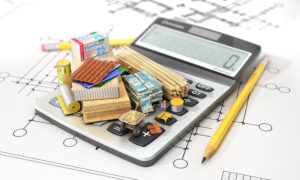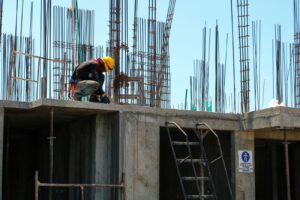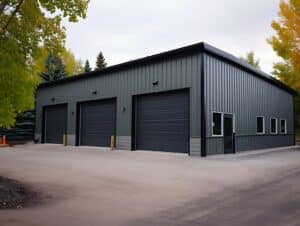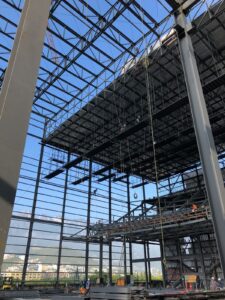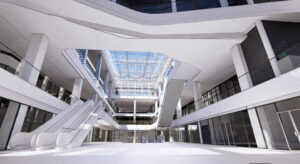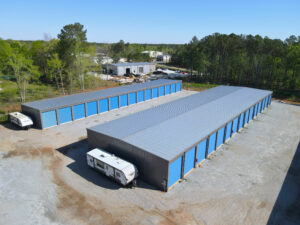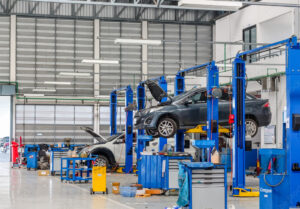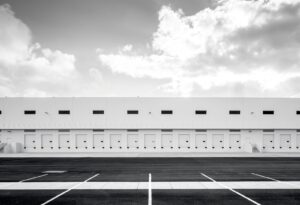Commercial construction projects are a vital part of the modern urban landscape. From towering skyscrapers to sprawling shopping malls, these projects shape our cities and provide spaces for businesses to thrive. This article will explore the different types of commercial construction projects, the importance of commercial construction, and the key elements involved in these projects.
Understanding Commercial Construction
Before diving into the various types of commercial construction projects, it is essential to have a clear understanding of what commercial construction entails. Commercial construction refers to the process of building structures that are intended for commercial use. These projects are typically undertaken by construction companies or developers and involve the construction of buildings such as office complexes, retail spaces, industrial facilities, healthcare facilities, educational institutions, and sports facilities.
Defining Commercial Construction
Commercial construction encompasses a broad range of projects aimed at meeting the needs of the business community. These projects are often more complex and require a higher level of expertise compared to residential construction. Commercial construction involves the design, planning, and execution of buildings that are specifically tailored to accommodate the needs of commercial enterprises. These structures are constructed with durable materials, advanced systems, and innovative designs to ensure functionality and efficiency.
Importance of Commercial Construction
Commercial construction plays a crucial role in economic development and job creation. These projects not only provide spaces for businesses to operate but also drive economic growth by attracting investment and creating employment opportunities. Additionally, commercial construction projects contribute to the overall infrastructure and aesthetic appeal of cities. They shape the skyline and create iconic landmarks that define the character of a city.
One of the fascinating aspects of commercial construction is the level of customization that can be achieved. Each project is unique and requires careful consideration of the specific needs and requirements of the businesses that will occupy the space. From the layout and design to the selection of materials and finishes, every detail is meticulously planned to create a functional and visually appealing environment.
Furthermore, commercial construction projects often involve collaboration between various professionals, such as architects, engineers, contractors, and interior designers. This interdisciplinary approach ensures that all aspects of the project are carefully coordinated and executed to achieve the desired outcome. The expertise and creativity of these professionals come together to transform a vision into a tangible structure that meets the highest standards of quality and functionality.
Different Scales of Commercial Construction
Commercial construction projects can vary significantly in scale, from small-scale projects to large-scale developments that span several city blocks. Understanding the different scales of commercial construction is key to comprehending the diversity of projects within this sector.
Commercial construction is a dynamic industry that caters to a wide range of project sizes and scopes. Each scale of construction presents its own set of challenges and opportunities, shaping the built environment in unique ways.
Small-Scale Commercial Construction
Small-scale commercial construction projects involve the construction or renovation of relatively modest structures. These projects typically include small office buildings, neighborhood retail spaces, and local restaurants. They are often undertaken by smaller construction firms or local contractors.
Despite their size, small-scale projects play a vital role in enhancing local economies and communities. They contribute to the vibrancy of neighborhoods, providing essential services and amenities to residents and visitors alike.
Medium-Scale Commercial Construction
Medium-scale commercial construction projects encompass larger buildings and developments. Examples include mid-sized office complexes, shopping centers, and multi-unit residential buildings. These projects often involve a larger construction team and require a more extensive planning and execution process.
Medium-scale projects strike a balance between size and complexity, offering opportunities for innovation in design and construction techniques. They serve as landmarks within their respective communities, driving economic growth and urban development.
Large-Scale Commercial Construction
Large-scale commercial construction projects are often the most ambitious and complex endeavors in the industry. These monumental projects include skyscrapers, mega shopping malls, and mixed-use developments. Large-scale projects require meticulous planning, significant financial backing, and the collaboration of numerous stakeholders.
Large-scale construction projects have the power to transform city skylines and redefine urban landscapes. They represent feats of engineering and design, pushing the boundaries of what is possible in the built environment. These projects leave a lasting impact on society, shaping the way people live, work, and interact with their surroundings.
Categories of Commercial Construction Projects
Commercial construction projects can also be classified into different categories based on the purpose of the constructed building. Let’s delve into some of these categories:
Office Buildings
Office buildings are iconic symbols of urban landscapes. They serve as the headquarters and operational spaces for a variety of businesses. Office construction projects require careful consideration of workspace functionality, aesthetics, and technological integration.
Retail and Restaurant Construction
Retail and restaurant construction focuses on creating spaces that can attract and accommodate customers. These projects include shopping malls, standalone retail stores, and restaurants. Designing layouts that optimize customer flow and creating appealing interior and exterior aesthetics are crucial in this category of commercial construction.
Industrial Construction
Industrial construction projects involve the creation of structures specifically designed for industrial activities. These projects include factories, warehouses, distribution centers, and manufacturing plants. Industrial construction requires specialized knowledge of industrial processes, safety regulations, and efficient material handling systems.
Healthcare Facilities and Hospitals
Healthcare facilities and hospitals are essential components of any city’s infrastructure. These projects demand careful planning to cater to the specific needs of patients, medical professionals, and support staff. From the layout of patient rooms to the integration of advanced medical equipment, healthcare construction projects require a high level of expertise and attention to detail.
Educational Institutions
Educational institutions encompass a wide range of construction projects, from schools to universities. These projects require consideration of various factors, including classroom design, accessibility, and space utilization for laboratories, libraries, and recreational areas. Educational construction projects shape the learning environment and contribute to the future of students and communities.
Sports Facilities
Sports facilities capture the spirit of competition and provide spaces for athletes and spectators. From stadiums to arenas and sports complexes, these large-scale projects require careful planning to ensure optimal viewing experiences, player facilities, and spectator amenities.
But commercial construction projects don’t stop there. Other categories deserve recognition for their unique contributions to the built environment.
Entertainment Venues
Entertainment venues, such as theaters, concert halls, and event spaces, add vibrancy and cultural enrichment to communities. These projects require meticulous attention to acoustics, lighting, and seating arrangements to provide an immersive experience for audiences. From the grandeur of a Broadway theater to the intimacy of a small music venue, entertainment construction projects bring people together to enjoy the magic of live performances.
Hospitality and Tourism
Hotels, resorts, and tourism-related construction projects play a vital role in attracting visitors and creating memorable experiences. The design and construction of these establishments aim to provide comfort, luxury, and convenience to guests. From the architectural design that blends seamlessly with the surrounding environment to the incorporation of state-of-the-art amenities, hospitality and tourism construction projects contribute to the economic growth and reputation of a destination.
These additional categories demonstrate the diverse nature of commercial construction projects and the impact they have on society. Each category requires specific expertise and attention to detail to create functional, aesthetically pleasing, and sustainable spaces that meet the needs of various industries and communities.
Key Elements in Commercial Construction
Several key elements are essential in commercial construction projects to ensure their success:
Design and Planning
Design and planning play a significant role in commercial construction projects. Architects and designers work closely with developers and construction teams to create functional and aesthetically pleasing spaces. The design phase includes considerations such as building code compliance, sustainability, space utilization, and integration of advanced technologies.
During the design and planning process, architects take into account the specific needs and requirements of the clients. They carefully analyze the site conditions, taking note of factors such as topography, climate, and surrounding structures. This attention to detail allows them to develop designs that not only meet the functional needs of the project but also harmonize with the natural environment.
Construction Materials
The selection of suitable construction materials is crucial in commercial construction. High-quality, durable materials not only ensure the longevity of the structure but also provide energy efficiency and cost-effectiveness in the long run. Materials such as steel, concrete, glass, and sustainable materials are commonly used in commercial construction.
When choosing construction materials, architects and engineers consider various factors such as strength, durability, fire resistance, and environmental impact. They also take into account the aesthetic qualities of the materials, ensuring that they align with the overall design vision. By carefully selecting the right materials, commercial construction projects can achieve a balance between functionality, sustainability, and visual appeal.
Construction Equipment
Commercial construction projects require a wide range of construction equipment to facilitate the construction process. From heavy machinery for excavation and material handling to specialized equipment for specific tasks, construction equipment plays a significant role in ensuring efficient and timely project completion.
The use of advanced construction equipment not only enhances productivity but also improves safety on the construction site. For example, the use of cranes and hoists allows for the efficient movement of heavy materials, reducing the risk of manual handling injuries. Similarly, the use of automated machinery and robotics streamlines construction processes, minimizing errors and improving overall efficiency.
Safety Measures in Commercial Construction
Safety is of paramount importance in commercial construction projects. Strict adherence to safety regulations and the implementation of proactive safety measures are essential to protect the construction workers and ensure a safe working environment. Safety protocols, training programs, and the use of personal protective equipment are critical components of commercial construction projects.
Construction sites can be hazardous environments, with potential risks such as falls, electrical hazards, and exposure to harmful substances. To mitigate these risks, construction companies prioritize safety through comprehensive training programs for their workers. They also implement safety measures such as regular inspections, safety signage, and the use of protective barriers. By prioritizing safety, commercial construction projects can create a work environment that promotes the well-being of all individuals involved.
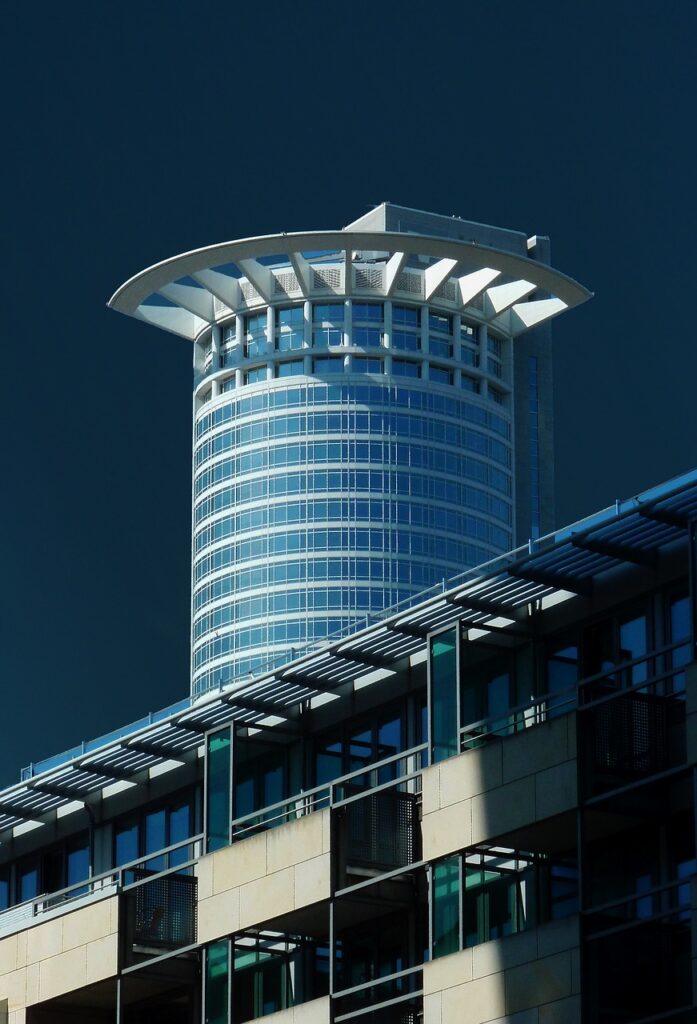
Commercial construction projects encompass a wide range of types and scales. These projects are integral to the economic development, job creation, and infrastructure of cities. Understanding the different types of commercial construction, including their respective scales and categories, provides insight into the complexity and diversity of this sector. Additionally, key elements such as design and planning, construction materials, construction equipment, and safety measures contribute to the successful execution of commercial construction projects.
At SteelCo Buildings, we offer everything needed from project concept to completion. Learn more about our experience in steel building design and design-build services for projects in GA or TN. Call today to speak to one of our experienced team members!


